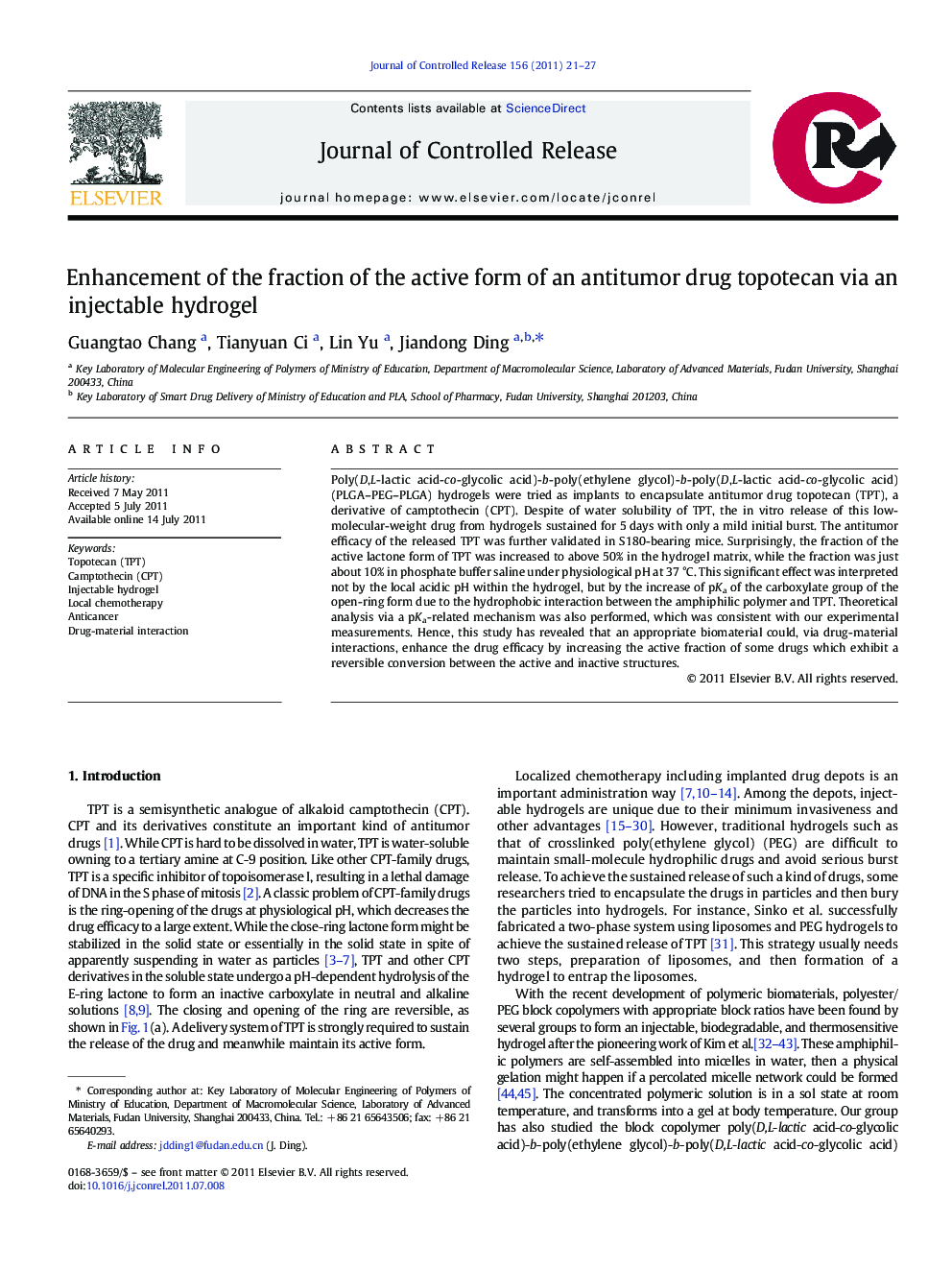| Article ID | Journal | Published Year | Pages | File Type |
|---|---|---|---|---|
| 1424897 | Journal of Controlled Release | 2011 | 7 Pages |
Poly(D,L-lactic acid-co-glycolic acid)-b-poly(ethylene glycol)-b-poly(D,L-lactic acid-co-glycolic acid) (PLGA–PEG–PLGA) hydrogels were tried as implants to encapsulate antitumor drug topotecan (TPT), a derivative of camptothecin (CPT). Despite of water solubility of TPT, the in vitro release of this low-molecular-weight drug from hydrogels sustained for 5 days with only a mild initial burst. The antitumor efficacy of the released TPT was further validated in S180-bearing mice. Surprisingly, the fraction of the active lactone form of TPT was increased to above 50% in the hydrogel matrix, while the fraction was just about 10% in phosphate buffer saline under physiological pH at 37 °C. This significant effect was interpreted not by the local acidic pH within the hydrogel, but by the increase of pKa of the carboxylate group of the open-ring form due to the hydrophobic interaction between the amphiphilic polymer and TPT. Theoretical analysis via a pKa-related mechanism was also performed, which was consistent with our experimental measurements. Hence, this study has revealed that an appropriate biomaterial could, via drug-material interactions, enhance the drug efficacy by increasing the active fraction of some drugs which exhibit a reversible conversion between the active and inactive structures.
Graphical abstractA thermoreversible hydrogel composed of copolymer PLGA–PEG–PLGA was found to enhance the equilibrium fraction of the lactone form of topotecan via elevation of the carboxylate pKa due to drug-material interactions.Figure optionsDownload full-size imageDownload as PowerPoint slide
